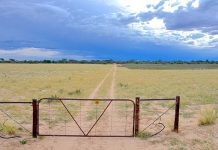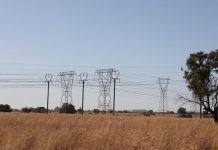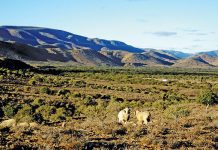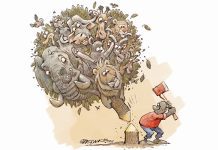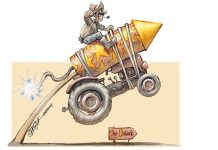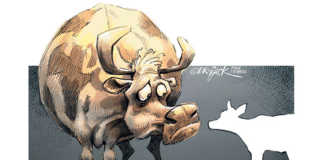
Fire is regarded as a natural ecological factor that has occurred since time immemorial on the savanna and grasslands of Africa. It is estimated that humans have been using fire for more than one million years. With its lightning storms and wet and dry periods, Africa is highly prone to fire. It also has the most extensive area of tropical savanna on earth. This veld-type is extremely flammable during the dry season, and the use of fire in the management of vegetation on the savanna and grasslands for domestic livestock systems and wildlife is widely recognised.
Research on the topic, conducted since the early 20th century, has focused on the effects of the seasons, the frequency of burning on the forage production potential of the grass and the ratio of bush to grass. However, up until the 1970s, the study of fire behaviour and its effects on the ecosystem was largely ignored in fire research and management. After discussions at an international conference on fire in Africa at the Tall Timbers Research Station at Tallahassee in the USA, it was recognised that the fire regime must include the type and intensity of fire as well as the season and the frequency of burning when applying prescribed burns.
READ MORE: Three people died in Harrismith veld fire
A research project was consequently initiated in South Africa in 1972 to determine the behaviour of fires on savanna and grassland and to ascertain the effect of the type and intensity of fire on the vegetation. The project was later extended to East Africa twenty years later. The research resulted in a greater understanding of the effects of fire on the continent, and led to
the development of more effective guidelines for fire regimes for controlled burning.
These applied both to domestic livestock and wildlife management systems. Currently, research programmes are being conducted on the effects of type and intensity of fire and season as well as frequency of burning in Southern and East Africa.
A necessary practice
Prescribed burning is an important and often essential management practice in areas used for commercial or subsistence farming. Scientists agree that the most important reasons for prescribed burning are to remove moribund or unpalatable vegetation and prevent or control the encroachment of undesired plants. It has also been suggested that fire can be used to control ticks, and hence tick-borne diseases in livestock.
For a period, this was generally discounted because ticks persist in frequently burned areas. However, research in the Ngorongoro crater and Serengeti grasslands in Tanzania showed that controlled burning by the nomadic Masai livestock farmers resulted in a significantly lower incidence of ticks. This has led to the re-introduction of prescribed burning in the Ngorongoro Crater to control excessive tick loads causing babesiosis (redwater) in buffalo and black rhino in the crater.
Research has also shown that frequent fires favour the abundance of productive and palatable grasses, such as Themeda triandra, in southern African grasslands. Improving the botanical composition of the veld through appropriate fire regimes and grazing management could thus be considered as valid reason for burning grassland in the future.
Wildlife
Prescribed burning is also recognised as an important tool for wildlife management, although there are widely diverse views on the most appropriate way to do this in wildlife areas. They range from burning systems that depend entirely on lightning as the ignition source, to man-made fires based on veld condition. After my personal experience in southern and east Africa, I have concluded that man-made fires are a more practical and efficient procedure for prescribed burning when applied according to the condition of the veld.
Using SA’s skills in Africa
Research to develop fire models and determine the effects of types and intensity of fire on herbaceous and woody vegetation has largely been limited to the Eastern Cape and the Kruger National Park. There is thus a need to conduct similar ecological studies on other grassland and savanna areas on the continent. Unfortunately, a number of stumbling blocks stand in the way. The greatest of these is the difficulty of finding suitable study sites where land owners and users are prepared to sacrifice grazing for scientific studies.
READ MORE: Blazing or grazing – the great fire debate
Applying controlled experimental fires is dangerous, requiring good managerial skills and suitable fire-fighting equipment to contain fires, neither of which are readily available over much of the continent. The research is normally logistically complex, time-consuming and expensive – both in terms of research staff and financial resources. Finally, competent fire ecologists are a rare commodity, not only in Africa but across the world. This further limits the development and implementation of a comprehensive fire research programme in the rest of Africa.
In the meantime, it is strongly recommended that current fire research skills developed in South Africa be extended to
other grassland and savanna areas in Africa as much as possible, as this will add markedly to improving rangeland management for livestock production and wildlife management on the continent. – Annelie Coleman
Phone Prof Winston Trollope on 082 200 3373 or email [email protected].
The views expressed in our weekly opinion piece do not necessarily reflect those of Farmer’s Weekly.

